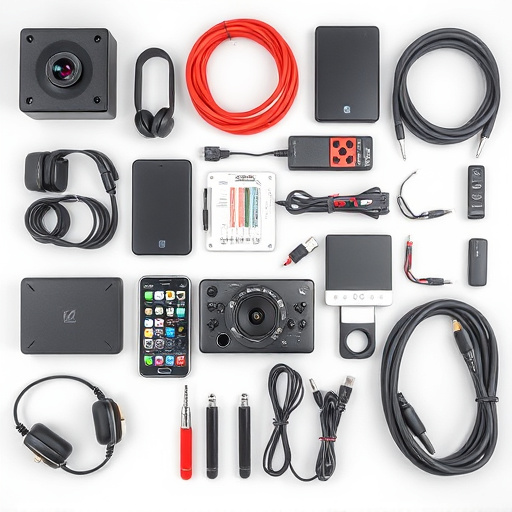Auxiliary batteries are vital for solar power systems, providing backup and storage for consistent electricity supply in off-grid locations. Common types include lead-acid (durable but high maintenance), lithium-ion (high energy density, longer lifespan), and AGM/gel (stable, low-maintenance). Deep cycle vs. shallow cycle batteries cater to different needs: deep cycle for frequent discharges, shallow cycle for less demanding applications. Lead-acid batteries are traditional, reliable, and affordable; lithium-ion offers superior performance and longevity; gel cells are robust and leak-proof. Choosing the right auxiliary battery matches watt-hour ratings with solar output, considering chemistry, DoD, cycle life, weight, and cost. Proper maintenance, avoiding deep discharge, and consistent charging extend battery lifespan, ensuring reliable energy backup for solar systems.
In the realm of solar energy, an auxiliary battery is a vital component ensuring uninterrupted power supply during periods of low sunlight or grid outages. This comprehensive guide delves into the diverse world of solar auxiliary batteries, exploring their types, functions, and benefits. From deep cycle to shallow cycle options, we dissect lead-acid, lithium-ion, and gel cell batteries, empowering you to choose the perfect fit for your solar setup.
- Understanding Auxiliary Batteries in Solar Systems
- Types of Solar Auxiliary Batteries Explained
- Deep Cycle vs. Shallow Cycle Batteries
- Lead-Acid Batteries: Traditional Choice for Solar
- Lithium-Ion Batteries: Advancements and Benefits
- Gel Cell Batteries: Features and Applications
- Choosing the Right Battery for Your Solar Setup
- Maintenance and Longevity of Auxiliary Solar Batteries
Understanding Auxiliary Batteries in Solar Systems

Auxiliary batteries play a pivotal role in solar power systems, acting as a crucial component for energy storage and backup. These batteries are designed to complement the primary solar panels by providing additional electrical power when sunlight is scarce or unavailable. In many off-grid or remote locations, auxiliary batteries ensure a consistent power supply, enabling users to rely on their solar system even during cloudy days or at night.
Understanding the purpose of an auxiliary battery is essential for anyone integrating solar energy into their routine. It serves as a safety net, ensuring uninterrupted access to electricity for essential appliances and devices. By storing excess energy generated by the solar panels during sunny periods, these batteries contribute to efficient energy management, optimizing the overall performance of the solar system.
Types of Solar Auxiliary Batteries Explained

Solar auxiliary batteries play a vital role in off-grid and backup power systems, ensuring reliable energy storage. These batteries are designed to complement solar panels by storing excess energy produced during sunny periods for use later when sunlight is scarce. The market offers several types, each with unique characteristics suitable for distinct applications.
Lead-acid batteries, a common choice, are cost-effective and well-established. They are heavy-duty and robust but may require more maintenance compared to other options. Lithium-ion batteries, on the other hand, offer superior energy density, making them lighter and more compact. This type is increasingly popular for its longer lifespan, faster charging capabilities, and reduced maintenance needs. Other variants include AGM (Absorbent Glass Mat) and gel batteries, known for their stability and low-maintenance operation, ideal for sensitive electronic devices.
Deep Cycle vs. Shallow Cycle Batteries

Deep cycle and shallow cycle batteries are two distinct types of auxiliary batteries designed for different applications, primarily based on their depth of discharge (DoD). Deep cycle batteries are built to handle repeated deep discharges, making them ideal for solar energy systems where the battery is regularly depleted below 20% capacity. These batteries are more robust and durable due to their ability to withstand frequent full discharges, ensuring they remain a reliable power source over time.
In contrast, shallow cycle batteries are optimized for less demanding use cases, typically operating within a shallower depth of discharge, usually between 5% to 70%. They are not designed for repeated complete discharges and are better suited for backup or cycling applications where the battery is not expected to deplete as deeply. Shallow cycle auxiliary batteries often have a longer lifespan but may not be suitable for prolonged solar energy storage due to their limited depth of discharge capability.
Lead-Acid Batteries: Traditional Choice for Solar

Lead-acid batteries have long been the traditional choice for solar auxiliary batteries, and their dominance in the market is a testament to their reliability and affordability. These batteries are well-established in renewable energy systems, offering a cost-effective solution for storing excess solar power. They are deep-cycle batteries designed to be regularly discharged and recharged, making them suitable for off-grid applications where reliable backup power is essential.
Their construction involves lead plates submerged in an electrolyte of sulfuric acid and water, creating a chemical reaction that stores energy. Despite being heavy and requiring regular maintenance, lead-acid batteries provide robust performance, especially in harsh environments. This battery type is widely available and often used in various solar systems due to its simplicity and proven track record.
Lithium-Ion Batteries: Advancements and Benefits

Lithium-ion batteries have emerged as a preferred choice for solar energy storage, particularly in the realm of auxiliary batteries. These batteries offer several advancements and benefits that set them apart from traditional battery types. One of the key advantages is their superior energy density, allowing for more power to be stored in a compact size—a significant advantage when space is limited. This feature makes lithium-ion batteries ideal for off-grid systems and remote locations where efficient energy storage is crucial.
Additionally, these batteries have a longer lifespan and can withstand hundreds of charge and discharge cycles without significant degradation. They are also known for their low self-discharge rate, ensuring that stored energy remains intact over extended periods when sunlight is not available. This reliability and longevity make lithium-ion auxiliary batteries a sustainable and cost-effective solution for solar energy applications.
Gel Cell Batteries: Features and Applications

Gel cell batteries are a popular choice for auxiliary batteries in various applications, thanks to their robustness and long lifespan. Unlike traditional lead-acid batteries, gel cells use a sealed, non-spillable design that incorporates a thick electrolyte made from a mixture of silica and other gelling agents. This unique construction not only eliminates the need for regular maintenance but also provides superior vibration resistance and thermal stability. Gel cell batteries are particularly well-suited for off-grid systems, recreational vehicles (RVs), boats, and backup power applications where reliability and longevity are paramount.
Their design allows them to operate effectively in a wide range of temperatures, making them ideal for harsh environments. Additionally, gel cells have a lower risk of leaking or exploding compared to liquid electrolyte batteries, rendering them safer choices for enclosed spaces. While they may not offer the same deep discharge recovery capabilities as some other battery types, their consistent performance and low self-discharge rate make them an excellent auxiliary power solution for applications that require dependability and longevity.
Choosing the Right Battery for Your Solar Setup

Choosing the right auxiliary battery is a crucial step in setting up your solar system. The primary consideration is understanding your energy needs and the capacity of your solar panels. You’ll want to match the battery’s watt-hour (Wh) rating with the total power output of your solar array over a day or year, depending on your usage patterns. This ensures efficient energy storage without overspending on excess capacity.
Factors like battery chemistry (lead-acid, lithium-ion, etc.), depth of discharge (DoD), and cycle life also play significant roles. Lead-acid batteries are traditional but heavier, while lithium-ion batteries offer lighter weight and longer lifespans. Higher DoD allows for deeper discharges before recharging, enhancing flexibility in usage. Always consider your budget, desired runtime during power outages, and the specific requirements of your off-grid or backup system when making your selection.
Maintenance and Longevity of Auxiliary Solar Batteries

Maintaining and prolonging the lifespan of your auxiliary solar batteries is essential for optimal energy storage performance. Regular cleaning and inspection are key; ensure terminals are free from corrosion and debris, as this can hinder power transfer. A consistent charging routine, avoiding deep discharge cycles, will also contribute to extending battery life.
Solar auxiliary batteries, when well-maintained, can last for several years, providing a reliable energy backup solution. Choosing the right battery type for your system, understanding its depth of discharge characteristics, and adhering to best practices for charging and storage will ensure peak performance and longevity.
When selecting an auxiliary battery for your solar system, understanding the unique requirements of your setup is key. Whether you prioritize deep cycle capabilities, energy density, or maintenance-free operation, each battery type offers distinct advantages. By weighing the factors discussed in this guide, including depth of discharge, lifespan, and environmental considerations, you can make an informed decision to ensure optimal performance and longevity for your solar power solution. Remember, the right auxiliary battery choice can significantly enhance the efficiency and reliability of your off-grid or backup energy system.
